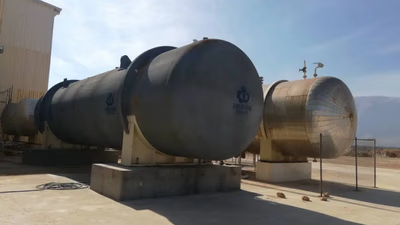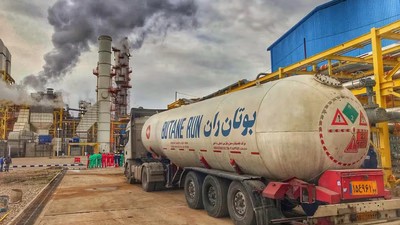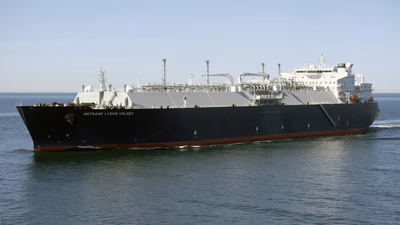
Ammonia"s role in commodity trade and supply chain solutions. "
Ammonia (NH3) is a compound composed of nitrogen and hydrogen atoms. It is a colorless gas with a distinct pungent odor. Ammonia is highly soluble in water and forms a strong alkaline solution when dissolved. It is commonly used in various industrial and household applications. In terms of its chemical structure, ammonia consists of one nitrogen atom bonded with three hydrogen atoms, forming a trigonal pyramid shape. It has a molecular weight of approximately 17 grams per mole. Ammonia readily forms hydrogen bonds with water molecules, making it a versatile compound for many chemical reactions.
Ammonia is primarily produced through the Haber-Bosch process, which involves the reaction of nitrogen gas (N2) and hydrogen gas (H2) in the presence of a catalyst, typically iron or ruthenium, and elevated temperature and pressure. This process allows for the large-scale production of ammonia, which is then used in various applications. In addition to being a cleaning agent, ammonia has other household uses. It can be found in some hair dyes, textile and leather treatments, and certain types of glue. However, it's important to use ammonia-based products with caution and follow the instructions provided.
While ammonia has various applications, it is essential to handle it with care due to its toxic nature. Inhalation of high concentrations of ammonia can cause respiratory issues and irritation to the eyes, throat, and skin. It is important to work in well-ventilated areas when using or storing ammonia and to wear appropriate protective equipment. Ammonia can have environmental consequences, particularly in cases of excessive release or improper disposal. It can contribute to water pollution if large amounts enter water bodies, leading to oxygen depletion and harming aquatic life. Moreover, ammonia emissions from agricultural activities can contribute to air pollution and have implications for ecosystems.
Ammonia, as an inorganic and colorless substance, is very irritating with a pungent and suffocating odor, the usual form of which is liquid. Ammonia is a stable binary hydride and its simplest hydride , a colorless gas with a distinct pungent odor. Ammonia is a common nitrogenous waste, especially among aquatic organisms, and by acting as a precursor and in fertilizers, it significantly contributes to the nutritional needs of terrestrial organisms. Ammonia, directly or indirectly, is one of iningredients in many pharmaceutical products and is used in many commercial cleaning products. This substance mainly accumulates by moving air and water downwards.
In 2013, about 148 million tons of ammonia were produced and marketed. Urea with 55% share is the most consumed ammonia, followed by ammonium nitrate with 10%, nitric acid with 9% and ammonium phosphate with 6%. Ammonium sulfate, ammonium bicarbonate, ammonium chloride, acrylonitrile, caprolactam, hydrogen cyanide and methyl amines are other substances in the ammonia value chain. Ammonia serves as a precursor in the production of various chemicals, including plastics, fibers, pharmaceuticals, and explosives. Ammonia is toxic and can be harmful to humans and animals if inhaled or ingested in high concentrations. It is important to handle and store ammonia safely, following proper guidelines and precautions.
Ammonia is a crucial component in the production of nitrogen-based fertilizers. It provides a source of nitrogen that is essential for plant growth and is often converted into other forms such as ammonium nitrate or urea. Ammonia is commonly used as a cleaning agent in household products such as glass cleaners and floor cleaners. Its alkaline properties help dissolve grease, dirt, and stains. Ammonia is widely used as a refrigerant in industrial refrigeration systems. It has excellent heat transfer properties and is more environmentally friendly than certain chlorofluorocarbon (CFC) refrigerants.
Ammonia plays a role in water treatment processes. It is used in both municipal and industrial settings for controlling pH levels, removing contaminants, and reducing chlorine levels in drinking water. Apart from its role as a fertilizer component, ammonia is also used in livestock farming. It is employed as a cleaning and disinfecting agent in animal housing to control odors and reduce the risk of diseases. Ammonia has gained attention as a potential alternative energy source. It has a high energy density and can be used as a fuel for power generation and transportation. The combustion of ammonia produces nitrogen and water vapor, making it a cleaner option compared to traditional fossil fuels.



